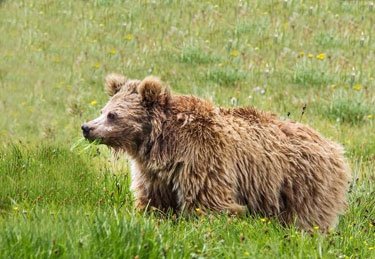Yeti is Apparently a Bear
Abominable Snowman, Cryptozoology, DNA, Himalayan Brown Bear
Hikers in Tibet and the Himalayas need not fear the monstrous yeti—but they’d darn well better carry bear spray. DNA analyses of nine samples purported to be from the “abominable snowman†reveal that eight actually came from various species of bears native to the area.
In the folklore of Nepal, the yeti looms large. The creature is often depicted as an immense, shaggy ape-human that roams the Himalayan hinterlands. Purported sightings over the years, as well as scattered “remains†secreted away in monasteries or held by shamans, have hinted to some that the yeti is not merely a mythical boogeyman.
But science has not borne this out so far. Previous genetic analyses of a couple of hair samples collected in India and Bhutan suggested that one small stretch of their mitochondrial DNA (mtDNA)—the genetic material in a cell’s power-generating machinery that’s passed down only by females—resembled that of polar bears. That finding hinted that a previously unknown type of bear, possibly a hybrid between polar bears and brown bears, could be roaming the Himalayas, says Charlotte Lindqvist, an evolutionary biologist at the State University of New York in Buffalo.
To find out for sure, Lindqvist and her colleagues took a more thorough look at the mtDNA of as many samples of supposed yeti remains as she could get her hands on. Some were obtained when she worked with a U.K. production crew on the 2016 documentary Yeti or Not?, which sought to sift fact from folklore. The filmmakers got hold of a tooth and some hair collected on the Tibetan Plateau in the late 1930s, as well as a sample of scat from Italian mountaineer Reinhold Messner’s museum in the Tyrolean Alps. More recent samples included hair collected in Nepal by a nomadic herdsman and a leg bone found by a spiritual healer in a cave in Tibet. The team also analyzed samples recently collected from several subspecies of bears native to the area, including the Himalayan brown bear, the Tibetan brown bear, and the black bear. Altogether, the scientists analyzed 24 samples, including nine purported to be from yeti.
Of the nine “yeti†samples, eight turned out to be from bears native to the area, the researchers report today in the Proceedings of the Royal Society B. The other sample came from a dog.






